adamasgem
Brilliant_Rock
- Joined
- May 23, 2003
- Messages
- 1,338
Garry H (Cut Nut)|1291955337|2792874 said:adamasgem|1291916139|2792167 said:ChunkyCushionLover|1291835073|2791168 said:adamasgem said:Fire is, to me, the ability of the stone to separate pure spectral hues such that they are easily resolved by the viewer. This, of course. is environment dependent.
Virtual facets tend to make the areas of pure spectral hues smaller, and thus less resolvable by the viewer.
Hi Marty,
I just did some experiments.
There appears to be less very bright fire seen from main facets - most of the activity comes from the upper girdle facets when (Master Stones 7 and 12) are viewed from about 25cm in LBox with X 5 degrees and Y 3 degrees of rotation.
The viewing environment is one that slightly exaggerates fire with thin slits of light from 5 fluoro tubes with a dark ceiling.
I examined several LBox movies (as they palyed as well as the individual photo jpegs) and it seems from the camera distance of about 20cm that my observations are well supported.
From 60cm away it is harder to resolve where the fire is coming from, but it seems to be more balanced between table and crown facets.
Garry..
The "Fire" in the mains is split into a minimum of three plus parts, the area of the arrow head, and the areas on each side of the arrowhead on the mains, which are usually split colors.
The rest of the diamond have smaller areas of distinct fire.
The largest single relative area of "fire" I remember seeing,next to the aroow heads, when rotating a highly symmetrical stone, and observing the color change, comes from the arrow shafts, each shaft having different colors. This observation is consistent with what one sees in a dual color contrast device, like a hearts and arrow viewer, firescope, etc.
Your envirionment is different then mine, (5 versus 10000 "points") so you may have some aliasing effects, just as GIA's metric based on single ray area and angle of incidence chromatic flares, would conceivably have, at least in my considered opinion.
Mathematically what you "see" in a reverse ray trace is aliased by the number of interactions you limit yourself to.
I have deconvolved some of the pictures I have taken into the spectrum elements observed a long time ago which were not as good as I would have liked to have, but will examine them again when I take the new set on my masters after the holidays.

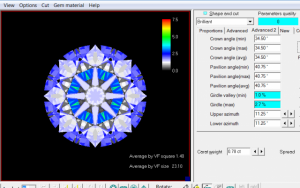
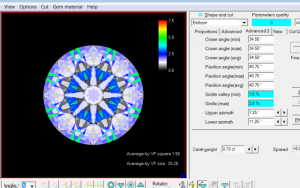
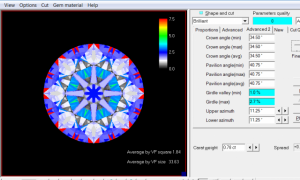
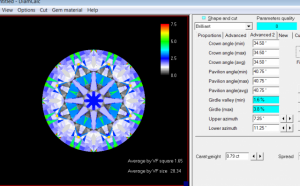
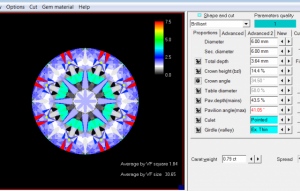
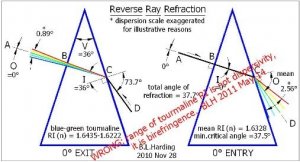


300x240.png)